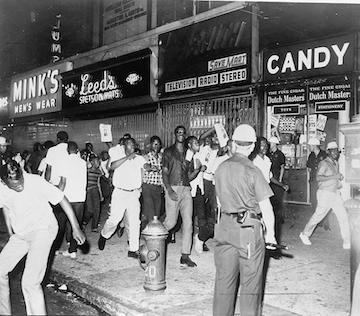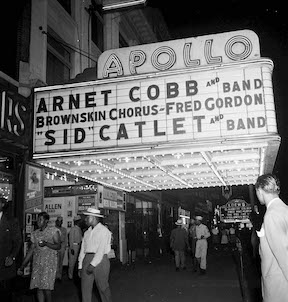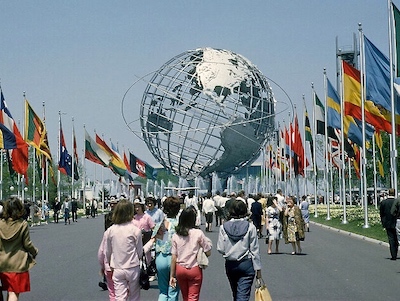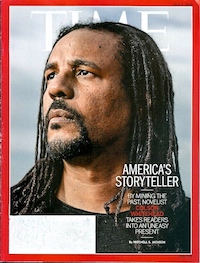Note: Colson Whitehead is a two-time WINNER of the Pulitzer Prize for Fiction, one of only four two-time winners in history. He is also a WINNER of the National Book Award.
“An outside observer might get the idea that Carney trafficked quite frequently in stolen goods, but that’s not how he saw it. There was a natural flow of goods in and out and through people’s lives, from here to there, a churn of property, and Ray Carney facilitated that churn. As a middleman. Legit.”
 Set in the years between 1959 and 1964, author Colson Whitehead’s newest novel vibrantly establishes the many aspects of daily life in the Harlem community, depicting its people and its activities in detail and making the reader care about the characters from the outset. Ray Carney, the main character, who is the son of a hoodlum, has had to learn about life the hard way. Living on his own from his teen years, he has had to work hard, learn to make ends meet, deal with the bullies in school, stay alive, and somehow manage to graduate from high school and then Queens College with a business degree, all without an adult to serve as a healthy role model for him. Ambitious, he owns a store by 1959, selling new and used furniture, and is happily married and the father of a young daughter, with another child on its way. With his wife Elizabeth, he lives in an apartment that is “dark, with a back window that peered out onto an air shaft and a front window kitty-corner to the elevated 1 train.” Weird smells and trains rumbling are what they are used to, dramatically different from the life Elizabeth’s more prosperous parents enjoy in Strivers’ Row, a “little island” that is “one of the most beautiful stretches of Harlem.”
Set in the years between 1959 and 1964, author Colson Whitehead’s newest novel vibrantly establishes the many aspects of daily life in the Harlem community, depicting its people and its activities in detail and making the reader care about the characters from the outset. Ray Carney, the main character, who is the son of a hoodlum, has had to learn about life the hard way. Living on his own from his teen years, he has had to work hard, learn to make ends meet, deal with the bullies in school, stay alive, and somehow manage to graduate from high school and then Queens College with a business degree, all without an adult to serve as a healthy role model for him. Ambitious, he owns a store by 1959, selling new and used furniture, and is happily married and the father of a young daughter, with another child on its way. With his wife Elizabeth, he lives in an apartment that is “dark, with a back window that peered out onto an air shaft and a front window kitty-corner to the elevated 1 train.” Weird smells and trains rumbling are what they are used to, dramatically different from the life Elizabeth’s more prosperous parents enjoy in Strivers’ Row, a “little island” that is “one of the most beautiful stretches of Harlem.”
Throughout these pages, Ray’s cousin Freddie provides a major connection to Ray’s past and its overlaps with the present. Freddie enjoys Ray’s company, especially since he has learned that he can use Ray to help him dispose of stolen goods. So far, the “fencing” has been fairly minor, but Freddie, not much of a thinker, hangs out with Miami Joe and other crooks, and he has recently decided to involve Ray in a robbery planned for the Hotel Theresa, a robbery about which Ray does not have full knowledge until it is well underway. Jewelry and cash stored in the hotel safe end up in Ray’s hands, and he has no idea what to do with it or where to how to get rid of items of great value. Likewise, he is at a loss when he learns that he must also get rid of a body from the aftereffects of the robbery.
Part II, from 1961, shows the beginning of a rapidly changing society in Harlem as Whitehead continues to develop his vibrant characters dealing with real changes in their lives, both self-created and imposed by the people with whom they associate. Here the scope broadens. Detective Munson, a white policeman, “helps” the community personally in exchange for a cut from some of the activities. The Dumas Club attracts an elite membership and becomes the goal of some upwardly mobile characters from within the community, while others are drawn to organizations like the NAACP, CORE, and SNCC. Carney’s wife Elizabeth works for Black Star Travel, which has expanded its programs to include bookings for civil rights groups. An increasing number of leaders have been steering clients to Carney’s store, in exchange for a piece of the action, and the heroin trade has been increasing. Despite the serious social and political issues happening on a small scale here, Whitehead’s focus is unremittingly on his characters, especially those who appear to have good hearts only “slightly tainted” by criminal elements with which they may be associated. He never presents incidents purely for shock value and excitement in the narrative, and even the most evil deeds, like murder, are part of the “general picture” of life, not a focus for their own sake.
Part III, which takes place in 1964, shows some changes to the life of Ray Carney’s family – they have moved to Riverside Drive, where they do not hear the trains, but, instead, the “cooing of baby pigeons.” Ray’s in-laws are now living at upscale Park West Village. Carney’s Furniture Store remains at its old address, not far from the Apollo Theatre, but the decor has been updated and it more stylish than it was. The World’s Fair, held in Queens, has been a gigantic success, with spectacular consumer events and visions of the future. While all this is happening in Queens, however, Harlem is facing violent protests and bloodshed. The police killing of a fifteen-year-old, unarmed black boy has drawn attention to the racial divide and the whole area is about to explode with frustration and hatred of injustice. As rioting breaks out, some of Carney’s shady accomplices take advantage of the turmoil, while others get caught up in issues serious enough to cost them their lives. Somehow Carney manages to toe the line and stay clear of the worst threats while benefitting, big-time, from some of the confusion.
Harlem Shuffle by Colson Whitehead is a gem of novel, one certain to win both literary prizes and enthusiastic plaudits from its readers. A crime novel which remains both entertaining and filled with warmth toward many of the characters, even those who do not follow the straight and narrow, it shows life as it is and emphasizes the variety of ways that people deal with their difficulties successfully, even when threats and fear become part of the equation. Despite his marginal set of ethics, Carney as main character remains intriguing and sympathetic in most of his actions. And though he may never be considered a “hero” on a grand scale, he is a hero to many people for his accomplishments and his pragmatic vision of the community’s future possibilities. His innate goodness, even in the most trying times – in a neighborhood in which murder is common – somehow shines through, often with a touch of humor.

Demonstrators became rioters in Harlem in 1964, awakening the country to racial issues of importance there and elsewhere.
Photos. Strivers’ Row, one of the more elegant parts of Harlem, was where Elizabeth’s parents lived. https://www.walksofnewyork.com
The famed Apollo Theatre was a hub for entertainment and gatherings, not many blocks from Carney’s Furniture. https://www.blackpast.org
The 1964 New York World’s Fair was a huge success, changing people’s visions about what was possible in life and in the local world. https://www.atlasobscura.com/articles/relics-of-the-worlds-fair-new-york-city
Colson Whitehead, author of this novel, is the only author to have received two Pulitzer Prizes for his works. https://www.ebay.com
Demonstrators became rioters in Harlem in 1964, awakening the country to racial issues of importance there and elsewhere. https://en.wikipedia.org




